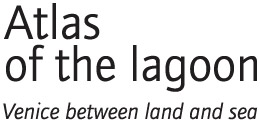
|
|
Valle da pesca:
area of the Lagoon artificially separated from the open waters of the Lagoon by fencing or dykes. They are shallow basins used for breeding fish, which are captured with the help of devices that obstruct their natural movement towards the open sea. They are an important part of the cultural heritage in terms of traditional fish-farming activities, and are documented in the Museum at Oasi di valle Averto. Vertebrate: animal having a spinal column. Wave height: vertical distance between the trough and the crest of a wave. Used for describing wave motion Waste waters: liquid residues – from urban areas, industrial plant, agriculture or commercial activity. Often a source of pollution. Wintering: the pattern among migratory species of stopping in a certain place for a certain period of the year. Xerico: ambiente caratterizzato da suoli secchi e da scarsa umidità atmosferica dove vivono piante dette “xerofite”. Xerofilo: si riferisce a organismi, comunità o ecosistemi di ambienti secchi. Zero up-crossing: method for the description of waves. The height of the water surface is measured at regular intervals, and the values are then plotted against time on a graph in which the average height = 0 on the vertical axis. An irregular curve is obtained, representing the elevations and depressions over time of the surface of the water with respect to the zero value. The average time between successive crossings of the mean water level in an upward direction may then be determined. Zoning: the division into zones of a given environment or area. For example, the coastal environment may be divided into the zone above the high tide mark, the zone between high and low tide, and the zone below the low tide mark. Zoocoenosis: complex of individuals of various interdependent animal species in a given biotope. The animal component of Biocoenoses. Zooplankton: animal component of plankton. |